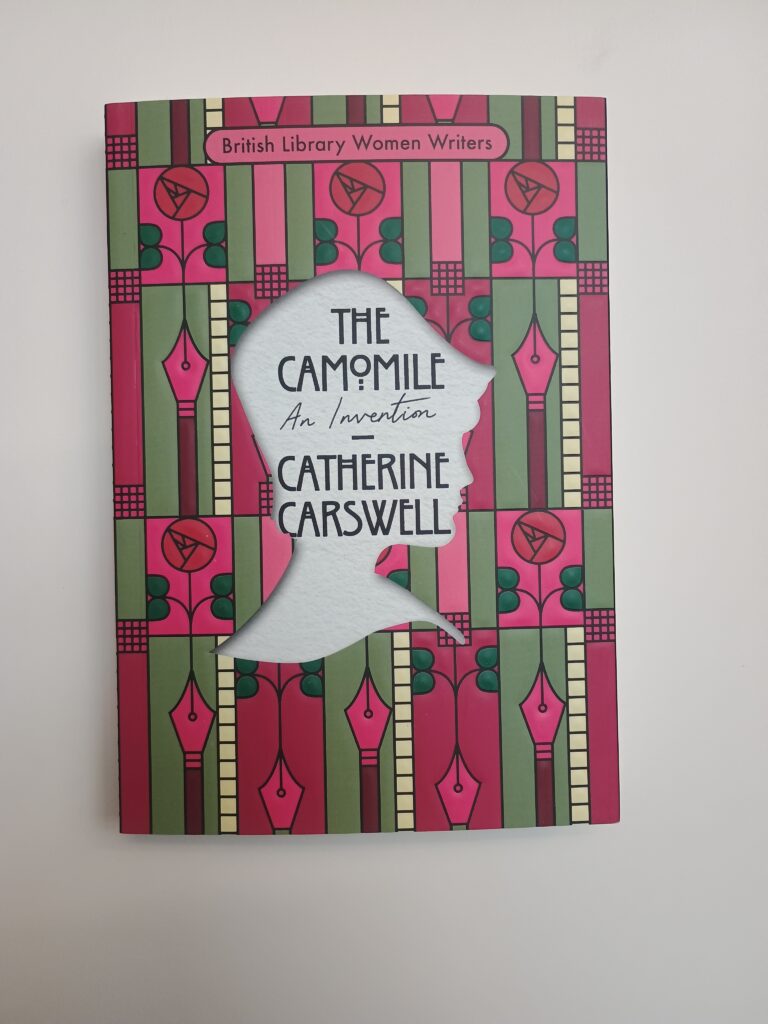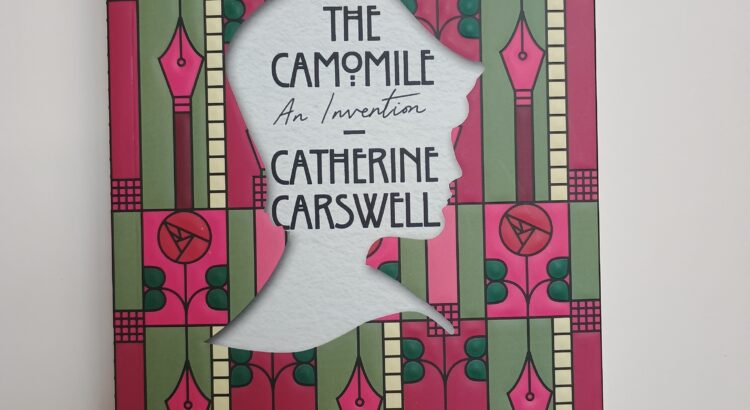We are delighted to have played a small part in bringing back into print Catherine Carswell’s 1922 novel “The Camomile”. The novel vividly evokes the Glasgow of the early 20th century. It tells the story of Ellen Carstairs, a women in her early twenties who rents a room so she can think, write and just be herself free from the shackles of family life.
Last year a colleague contacted the British Library to ask if they had considered republishing any Scottish writers as part of their “British Library Women Writers” series. The series reprints the works of 20th century women writers who were popular but are now in danger of being neglected. The British Library asked if had we had any suggestions. After a think we had an online meeting with them where we made a case for republishing works by Willa Muir, N. Brysson Morrison and a novel by Rebecca West called “The Judge” which is set in Edinburgh, among others. Our favourite though and the novel we made the strongest case for was “The Camomile” by Catherine Carswell. This is because it captures the sights and sounds of Glasgow in the early 20th century with scenes set in Byres Road and the Mitchell Library but mainly because of the energy, humour and sheer readability of the novel. A brief summary of Carswell’s life and literary career gives some idea of why she is such an important and interesting writer.
Catherine Carswell (1879-1946) was born into a God fearing Free Church family in Glasgow. She grew up to be a free-spirited journalist and author whose works often attracted controversy. She was sacked from the Glasgow Herald for a favourable review of D. H. Lawrence’s “The Rainbow” in 1915. Lawrence was a close friend and asked for Carswell’s opinion on a work in progress “Women in Love” and later he commented on drafts of Carswell’s first novel “Open the door”. Her 1930 biography “The life of Robert Burns” caused consternation with its frank portrayal of Burns’ life and work and Carswell was sent a bullet in the post. She was re-discovered by a new generation when her semi-autobiographical novel “Open the door” (1920) was published as a Virago Modern Classic in 1986 followed by her second novel “The Camomile” (1922) in 1987. An unfinished autobiography “Lying Awake” was published posthumously in 1950 and a biography by Jan Pilditch in 1997. More recently though Carswell and her work seemed to be again in danger of falling into neglect.
We were delighted to see a copy of “The Camomile” on the new and notable books table when we recently visited our local bookshop. A closer examination showed that it was indeed the edition we had discussed with our friends at the British Library. They have done an excellent job of bringing the novel back into print. It has a preface by Helen Vincent who was until recently the head of our Rare Books department and who now by coincidence works for the British Library. It also has a brief chronology of the 1920s which puts the novel into historical context and an afterword by Simon Thomas which gives it literary context. The design incorporates which I think is called the French flap, an extra folded bit on each side which as well as telling you more about the book can also be used as a bookmark. On the back cover they call it an “effervescent novel” and we wholeheartedly agree.

